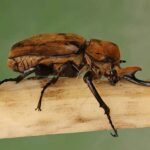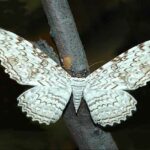Rhinoceros beetles, with their imposing size and horn-like structures, are among the world’s most recognizable and fascinating insects.
These beetles, belonging to the subfamily Dynastinae, have captivated the imagination of many due to their unique appearance and intriguing behaviors.
Let’s delve into the world of these magnificent creatures.
Taxonomy and Classification
| Domain | Eukaryota |
|---|---|
| Kingdom | Animalia |
| Phylum | Arthropoda |
| Class | Insecta |
| Order | Coleoptera |
| Family | Scarabaeidae |
| Subfamily | Dynastinae |
Size & Appearance
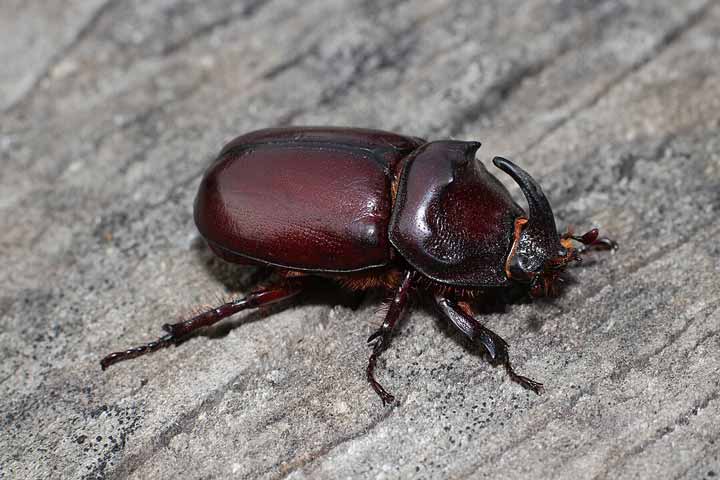
Rhinoceros beetles can be quite large, with some species reaching more than 15 cm (6 inches) in length.
Despite their intimidating appearance, they are harmless to humans as they cannot bite or sting.
Their name is derived from the horn-like structures, present mainly in males, which they use for fighting rivals and attracting mates.
These beetles are known for their strength, with some species reportedly able to lift up to 850 times their own weight!
The weight of rhinoceros beetles can vary based on the species and their life stage. For instance, the grubs of the Hercules beetle, a type of rhinoceros beetle, can weigh up to 100 grams.
Habitat and Distribution
These beetles are native to various parts of the world, from the dense forests of Central and South America to the tropical regions of Asia.
They thrive in warm, humid environments and are often found in wooded areas where they can feed on plant sap, fruit, and nectar.
Diet
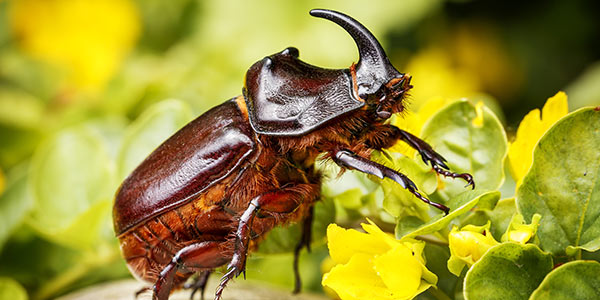
Rhinoceros beetles primarily feed on plant sap, nectar, and fruit. The larvae, however, have a different diet and consume rotting wood. This diet supports their growth until they metamorphose into their adult form.
Lifespan
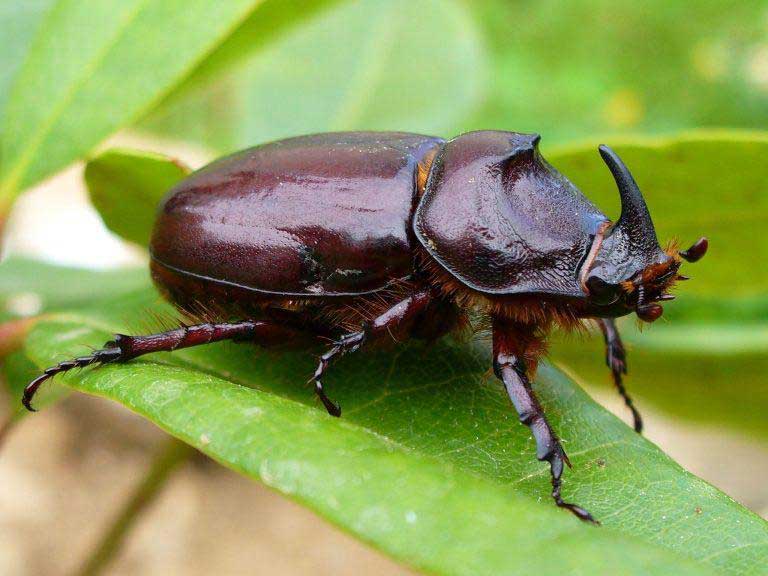
Rhinoceros beetles have a varied lifespan depending on the species and environmental conditions.
In general, they can live from several months to up to 2-3 years in the wild.
Factors that influence their lifespan include availability of food, predation, and environmental conditions.
In captivity, with optimal conditions, some species can live slightly longer.
Life Cycle

The life cycle of the rhinoceros beetle begins when the female lays her eggs in decaying organic matter.
Once hatched, the larvae feed and grow until they are ready to pupate. After pupation, the adult beetles emerge.
The males’ horns are used for fighting over females and feeding sites on trees, logs, and even crops.
The horns are used not to inflict injury but to force rivals from the disputed area.
Rhinoceros Beetle Larvae
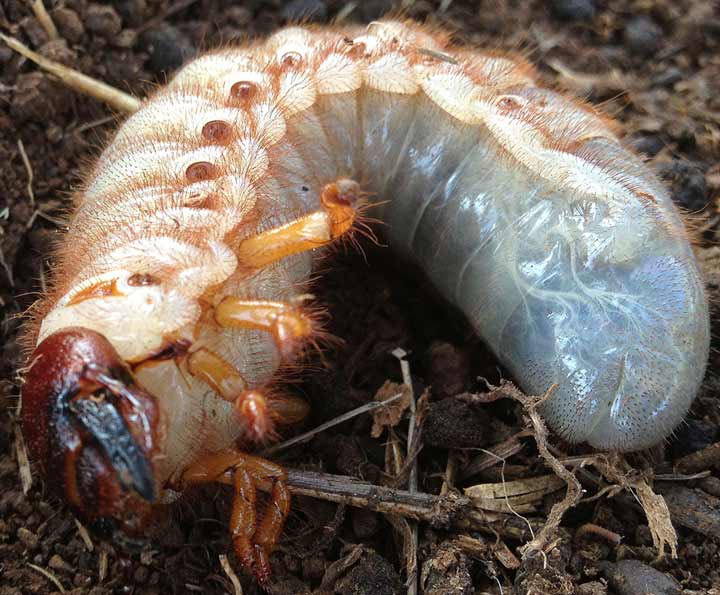
The larvae of rhinoceros beetles, commonly referred to as grubs, are C-shaped and have a creamy-white color.
They possess a brown head and strong mandibles, which they use for feeding on decaying wood and plant matter.
These grubs can be quite large, with some, like the Hercules beetle larvae, weighing up to 100 grams.
The larval stage is crucial for growth, and during this period, they undergo several molts before pupating.
Mating
Rhinoceros beetles have a unique mating ritual. The males use their horns to compete with other males to access females.
These battles are not typically aggressive and rarely result in injury. Instead, the horns are used to push and shove opponents.
The larger the horn, the more advantage a male has in these confrontations. After a successful courtship, the female will lay her eggs.
Reproduction
Female rhinoceros beetles can lay up to 50 eggs. The exact number of eggs laid varies depending on the species and environmental conditions.
These eggs are typically deposited in rotting wood or soil rich in organic matter.
The emerging larvae are grub-like and will feed on the decaying matter, undergoing several molting stages before they pupate and transform into adults.
Price
As for the price, the cost of rhinoceros beetles can vary based on the species, size, age, and whether they are being sold as pets or for research purposes.
Typically, prices can range from $5 to $50 or more for rare species or particularly large specimens.
It’s always best to check with specialized insect dealers or pet stores for the most accurate and up-to-date pricing.
Fascinating Facts about Rhinoceros Beetle
- Rhinoceros beetles are among the strongest animals on Earth relative to their size. They can carry loads up to 850 times their own weight.
- Despite their intimidating appearance, these beetles are harmless to humans and do not bite or sting.
- When agitated, rhinoceros beetles make a hissing sound. This sound comes from the beetle rubbing its abdomen against its wings
Interactions with Humans
In some parts of Asia, rhinoceros beetles have gained popularity as pets due to their low maintenance and harmless nature.
Additionally, they are used in gambling fights, where two male beetles are pitted against each other.
The beetles’ natural inclination to fight is heightened in the presence of a female or through the use of noisemakers that mimic the female’s mating call.
Conclusion
Rhinoceros beetles, with their unique horns and impressive size, are a testament to the diversity and wonder of the insect world.
Their intriguing behaviors, combined with their significant role in ecosystems as decomposers, make them a fascinating subject for both casual observers and entomologists.
Whether you encounter one in the wild or keep one as a pet, these beetles will leave a lasting impression.
FAQs
Rhinoceros beetles are large beetles from the Dynastinae subfamily, known for their distinctive horn-like structures, especially in males.
They are found on every continent except Antarctica, predominantly in warm, humid environments.
Adult beetles primarily feed on fruit, nectar, and sap, while larvae consume decaying plant matter.
Male beetles use their horns for combat, competing for access to females during mating seasons.
No, despite their formidable appearance, they are harmless to humans as they cannot bite or sting.
In parts of Asia, they are kept as pets and are used in traditional beetle-fighting games.
Their lifespan varies by species, but many can live up to 2-3 years in the wild.
The price of a rhinoceros beetle can vary based on species, size, and rarity. They can range from $5 to $50 or more when sold as pets or for breeding purposes.


